SanDisk Connect 64GB Wireless Flash Drive Review
USB and Micro-SD Benchmarks
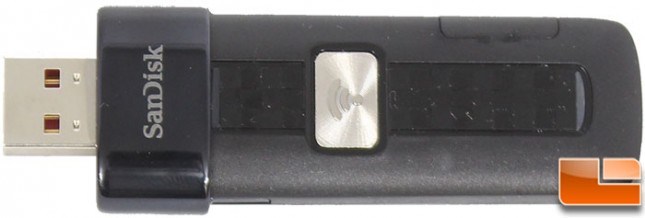
To check the performance of the SanDisk Wireless Flash Drive, we will first test the PC connectivity options. This includes testing the Micro SDHC card by itself and the Wireless Flash Drive on a USB 3.0 port. To test the Micro SDHC we will use the Kingston MobileLite G3 USB 3.0 media card reader.
Crystal Disk Mark
CrystalDiskMark 3.0.3 is a good benchmark to gauge how well a drive will perform. Many of the drive manufacturers have used this benchmark to show off the performance of their drives. It provides a quick benchmark of Sequential and Random read/writes, and included a NCQ with a queue depth of 32.
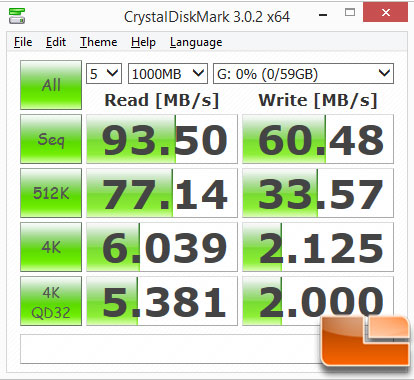
The SanDisk Micro SDHC card that is included in the Wireless Flash Drive has to specifications to verify how the benchmark is performing. However, when taking a look at the 64GB Micro SDHC cards on SanDisk’s website, the fastest 64GB card is the Extreme PLUS, with a rated 80/50MB/s Read/Write speed. Obviously this card is performing faster, and is actually closer to the Extreme Pro speeds, which SanDisk shows as only available up to 16GB.
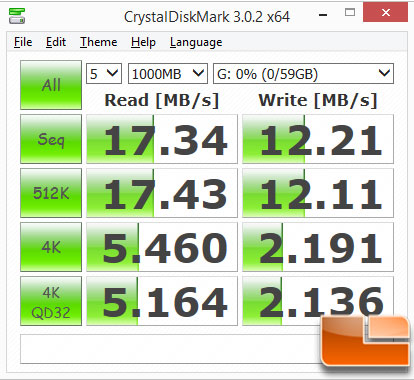
When the drive is connected to a USB 3.0 port, we received the expected USB 2.0 speeds. The Flash Drive itself is a USB 2.0 device, so these speeds are not unexpected. They are a little lower than I would have thought.
ATTO
ATTO is another benchmark that will provide results over any type of drive; hard drives, SSD, USB and RAID arrays. It allows the user to set various factors such as data transfer size, length of transfer, queue depth and several other options. ATTO provides a wide range of results across the various lengths, we will take a closer look at three of these, and see how the data compares for the read and write speed.
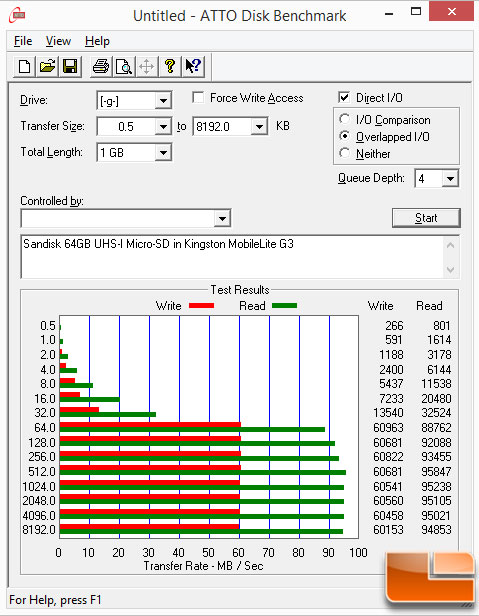
ATTO confirms the speed of the Micro SDHC card, receiving almost 95MB/s Read, and 60MB/s Write. It’s a pretty fast Micro SDHC card!
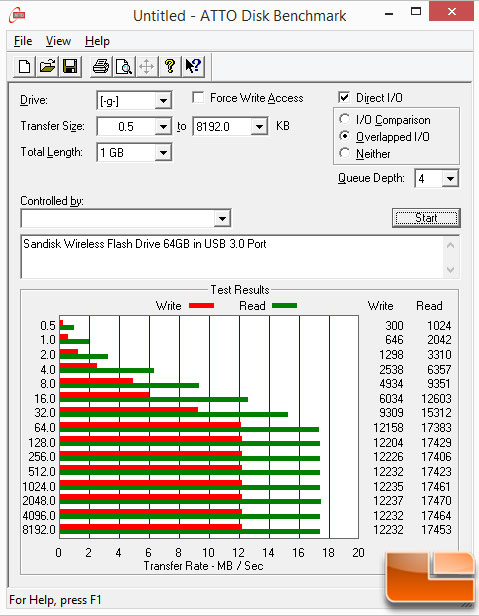
Once the SDHC card is back in the Wireless Flash Drive and ATTO evaluates it, we again see the limitation of the USB 2.0 connection.
